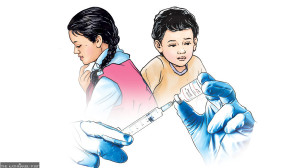National
No relief yet for Bajhang Dalits devastated by 2021 floods
Many have migrated to India after being excluded from reconstruction aid lists..jpg&w=900&height=601)
Basant Pratap Singh
Dashain, Nepal’s grandest festival, had filled Seku village in ward 9 of Kedarsyun Rural Municipality with joy and festivity. Relatives had returned home, friends reunited and the village echoed with laughter and celebration.
But just a day after Teeka, Dashain’s main day, the sky turned dark with hovering clouds. On the evening of October 16, 2021 rain began pouring relentlessly. Nearby streams roared louder with every passing hour and soon the roads and trails turned into rivers of muddy water.
Sher Damai, aged 65, of Seku village just below the rural road was preparing to go to bed. But the noise from the nearby stream unsettled him. A sense of impending doom filled his heart. While the rest of his family slept peacefully, he remained restless. By midnight, as the rain was still incessant, he stepped outside to assess the situation. What he saw was terrifying—floodwaters had already reached the doorstep.
Sensing danger, Sher quickly gathered his sleeping children and climbed uphill. “The moment we reached the road a few metres above, the house collapsed with a deafening crash,” Sher recalled the disaster. That single disaster damaged 15 homes in Seku village, which is home to 85 Dalit families.
There was an extension of the monsoon by a few days in 2021, wreaking havoc across the country. Bajhang, a remote hill district in Sudurpaschim province, was the hardest hit. According to the National Disaster Risk Reduction and Management Authority (NDRRMA), a total of 1,145 homes across the district needed reconstruction while another 854 required repairs. Of those affected, 463 families were from Dalit communities.
Four years have passed, and most of the victims are still waiting for the government to deliver on its promise of reconstruction aid. The neglect has hit Dalit communities the hardest, pushing nearly 3,000 people to migrate to India in search of work. More than 125 homes are now locked and abandoned.
Govinda Pokharel, the former vice-chairperson of the National Planning Commission and past chief executive officer of the National Reconstruction Authority, termed the situation a clear failure of governance.
“The government should have first provided temporary shelters and then ensured permanent housing within two to three years. But Dalit and poor families, whose only asset was their home, were left with nothing,” said Pokharel. “They had no financial alternatives. The state ignored them, and in return, people lost faith in the state and left the country. It’s a tragic failure of responsibility.”
After every disaster, a few helping hands usually appear. A week after the floods, local government teams and aid groups arrived to assess the damage. Some brought relief supplies. Among those waiting in line was Deepak Luhar of Seku, whose house had been filled with sludge from a landslide that broke through one of the walls. He and Sher had fled in haste, managing to save their lives but could not save their homes and salvage belongings.
Sher and Deepak submitted applications to the ward and rural municipality offices for reconstruction aid. “We were told that if we filed a request with the ward and rural municipality, we’d receive money to rebuild homes. It’s been four years and we’ve received nothing," lamented Deepak.
Many Dalit families from Bajhang were forced to migrate to India for work after being excluded from the government's beneficiary list or receiving only the first installment or falling into debt from trying to rebuild homes on their own. Some homes are now vacant while other families are preparing to leave the settlement.
Sher borrowed money to repair his damaged home, but the repaired house is still unsafe. Cracks have developed and stones fall from the walls. Deepak’s family, on the other hand, is staying in a neighbour’s home. Both men make ends meet by stitching clothes and forging tools for non-Dalit neighbours, receiving grain twice a year in return. The rest of the time, they rely on daily wage work and loans to survive.
Their dreams of building strong, permanent homes remain out of reach as the loans they’ve taken continue to pile up. In April 2022, Deepak's brother and his wife migrated to Bengaluru, India, with their infant child for work.
Two years earlier, Sher’s three sons and two daughters-in-law had also moved to India with their children. “They went to India hoping to earn enough to rebuild the house. But it is not easy to save money,” Sher said. “I don't know when we’ll ever rebuild our home and live safely.”
Discriminatory in enlisting beneficiaries
Neither Sher nor Deepak’s names appear on the NDRRMA’s official list of victims eligible for government aid for reconstruction. When informed about this, their frustration boiled over. “People with far less damage—some with none at all—are on the list but our names were removed. How is this justice?” Deepak questioned.
The NDRRMA records show that 46 Dalit families from ward 1 to 9 of Kedarsyun were affected by the 2021 disaster. Of these, 33 homes needed rebuilding and 13 required repairs. Yet, even those included in the list have not received any aid after four years.
One such person is 63-year-old Kainsi Od of Dundil village in ward 1 of Kedarsyun. Her mud-and-thatch house collapsed during the rains, forcing her family of 19 to live under a tarpaulin for two months. When her grandchildren began falling sick from the cold, she took out a loan and built a small shed. Repairing the old home and installing a tin roof cost her over Rs650,000 in loans.
Most of her family—four sons, three daughters-in-law, and nine grandchildren—moved to India to repay the debt. Now, only Kainsi and two granddaughters live in the village. “We cannot find work here. We had no choice but to send them,” she said. “If the government had kept its promise my family wouldn’t have had to leave and I wouldn’t be left alone in old age.”
Of the 23 Dalit families in Dundil village, six were included in the reconstruction list. But locals say 13 families’ homes were damaged. “The officials came and recorded everyone’s names. Then they cut some, added others. We don’t know how or why,” said Dharma Od. “Those who could get loans managed to repair their homes. Others left for India.”
Broken promises
In the wake of the disaster, not just local officials but top national leaders arrived in Bajhang by helicopter—then prime minister Sher Bahadur Deuba, home minister Bal Krishna Khand, Sudurpaschim chief minister Trilochan Bhatta, provincial Speaker Arjun Thapa and federal parliamentarians all promised swift reconstruction. Under the disaster management procedure 2020, affected families in mountain districts like Bajhang were to receive Rs 500,000 for rebuilding and Rs50,000 for repairs. Those needing relocation would get an additional Rs300,000 for land purchase.
But most flood and landslide victims in Bajhang remain empty-handed even four years later. The aid procedure mandates that local disaster committees identify beneficiaries and submit lists to the district. These must be accompanied by documents proving ownership or risk. The district committee then verifies and forwards the list to the national authority for aid distribution.
Yet, people like Sher, Deepak and Kainsi remain excluded—either left out of the original list or ignored during follow-up. Initial surveys showed 463 Dalit families qualified for aid. The second official list reduced that to 97. To date, only 33 have received the first installment of Rs 50,000.
Tasbir BK, a spokesperson for Kedarsyun Rural Municipality, blamed the systemic disregard of Dalits. “We’ve raised our voices at the municipal level. But this problem is district-wide. Dalits are still treated as second-class citizens,” he said. “There are no Dalits in decision-making roles. That’s why their needs are ignored.”
The situation in Durgathali Rural Municipality is equally grim. In 2021, 107 Dalit families were affected. Of them, 31 homes needed full reconstruction, 73 needed repairs, and three required re-evaluation. Yet only 14 were included in the second official list—and none have received even the first installment.
In Rakail village of Durgathali-3, landslides damaged several homes. Five families locked up their cracked houses and left three years ago. In other families, only the elderly and children currently stay while other family members went to India for work. “We submitted applications to the ward and the municipality. Nothing has come of it,” said victim Dhan Bahadur Parki. His son left for India to earn money to rebuild home.

According to Chief District Officer Kailash Thakurathi, many victims didn’t receive aid because municipalities failed to verify and approve the lists submitted. "Unless local governments finalise and confirm the lists online, the process can't move forward," he said.
Meanwhile, local representatives seem unaware or unwilling to act. "This disaster happened under the previous leadership. They were supposed to ensure aid distribution,” said Ramesh Bahadur Bohara, chairman of ward 3 of Durgathali. "I just learned that some people on the list haven’t received funds. I’ll look into it."
Bohara acknowledged that Dalit settlements, located in high-risk areas, have always borne the brunt of disasters across the district. Compounded by poverty and state neglect, they are being forced to leave behind not just homes—but entire villages.
“As per the national census in 2021, there are a total of 2,223 Dalit families in Khaptadchhanna Rural Municipality. The Dalit settlements are almost empty. Hardly one-fourth Dalit people are in the villages. Many families went to India after the 2021 disaster,” said Ram Bahadur Singh, chairman of ward 5 of Khaptadchhanna.




 18.12°C Kathmandu
18.12°C Kathmandu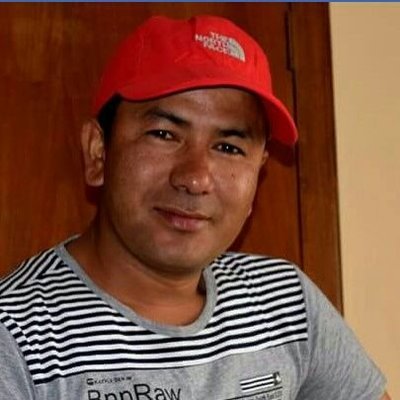


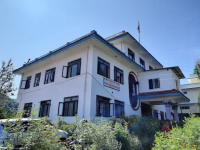


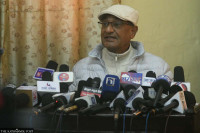


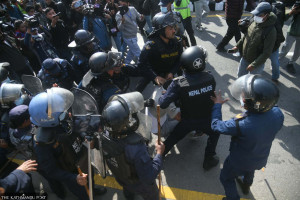
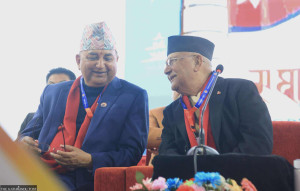



%20(1).jpg&w=300&height=200)

